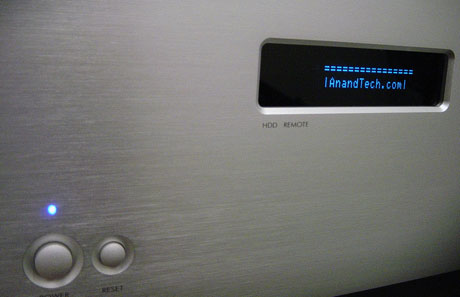A First Look at the HTPC Case Genre with the Ahanix D.Vine 4
by Purav Sanghani on October 10, 2004 1:00 PM EST- Posted in
- Cases/Cooling/PSUs
Final Thought
So, what makes a well designed HTPC case? First of all, great looks. An HTPC case should be able to fit in with the rest of a home theater's components to keep it from distracting viewers from the feature presentations. Second, an HTPC case needs to be able to accommodate every piece of hardware known to be media center compatible including optical drives, HDDs, and add-on cards. Third, the case needs to able to keep components running cool. After all, it is still a PC case with PC components inside.From our benchmarks, it is evident that this is not the best desktop chassis that we have come across as far as thermal results go. Especially when running CPU intensive applications like watching movies, cooling and air flow are just as important as the functions of the media center application and need to be taken into consideration when choosing the right HTPC case.
This is, however, the first HTPC case that we have looked at and we should not be so quick to judge it without a proper comparison. Ahanix has done an excellent job in the design and features such as the VFD, which displays much more information than the usual CPU temperature. Ahanix has designed a chassis that will look great with any combination of components and will fit in seamlessly.
For $200 with a supplied power supply, Ahanix has brought a decent chassis to the HTPC market. Its looks and features alone are enough to make our mouths water and we would definitely recommend this case to any home theater aficionado.











21 Comments
View All Comments
Zim - Sunday, October 10, 2004 - link
You don't need to spend $300 on a HTPC case. Just get yourself a nice desktop or mini-tower AT case for $100 or less. Personally I built my HTPC for about $400 using spare bits and pieces and some kit from NewEgg.